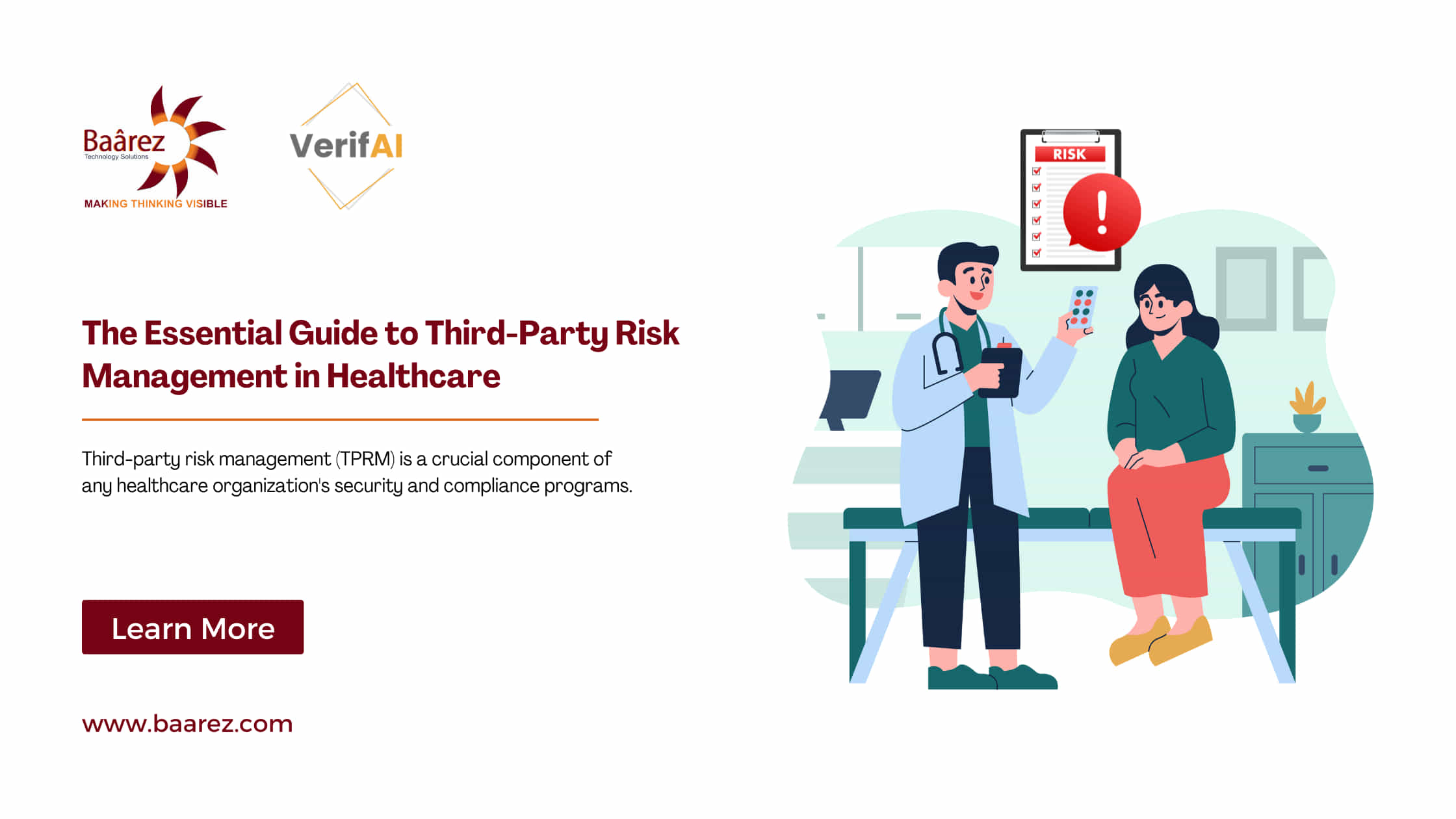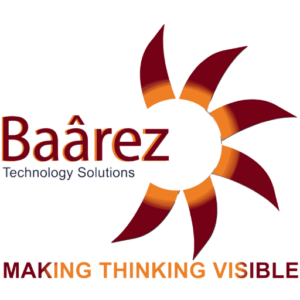
Table of Contents
ToggleA Complete Guide to Third-Party Risk Management in Healthcare
The Landscape of TPRM in the Healthcare Industry
Third-Party Risk Management (TPRM) is crucial in healthcare, where sensitive data and compliance with regulations are paramount. Healthcare organizations increasingly rely on third-party vendors for various services, from IT support to patient care technologies. This reliance exposes them to significant risks, including data breaches, compliance issues, and operational disruptions. Understanding the landscape of Healthcare TPRM involves recognizing the types of third parties engaged and the unique risks they bring. Regulatory bodies like HIPAA and GDPR enforce stringent rules, making effective TPRM essential to avoid penalties and safeguard patient information.
Third-Party Roles in Healthcare
In the healthcare industry, third-party vendors play diverse roles, ranging from cloud service providers and medical device manufacturers to billing services and IT support. Each of these vendors handles different aspects of healthcare operations, contributing to efficiency and innovation. However, their involvement also introduces various risks, such as data breaches, service disruptions, and compliance violations. Effective Vendor Risk Management in Healthcare requires identifying the critical functions performed by these third parties and assessing their potential impact on organizational operations and patient safety.
Regulatory Compliance and Standards
Healthcare organizations must adhere to numerous regulatory standards, including HIPAA in the United States and GDPR in Europe. These regulations mandate strict controls over patient data privacy and security, influencing how third-party vendors handle sensitive information. Compliance is not optional; failing to meet these standards can result in severe penalties and damage to reputation. Effective Third-Party Risk Management ensures that all third parties comply with relevant regulations and standards, safeguarding patient data and maintaining organizational integrity.
Notable TPRM Incidents in Healthcare
Several high-profile incidents have highlighted the importance of robust TPRM in healthcare. Data breaches involving third-party vendors have exposed millions of patient records, leading to significant financial losses and reputational damage. For example, the 2019 AMCA breach affected nearly 20 million patients due to inadequate security measures by a third-party billing vendor. Such incidents underscore the need for comprehensive Healthcare TPRM strategies to prevent similar occurrences and protect sensitive patient information.
Read more about What are Third-Party Risk Management Solutions for Compliance?
Risk Identification and Assessment
Identifying Potential Third-Party Risks
Identifying potential third-party risks involves evaluating all external entities that interact with a healthcare organization. This process includes analyzing the vendor’s security posture, understanding the data they access, and their operational reliability. Risk identification helps in recognizing vulnerabilities that could lead to data breaches, regulatory non-compliance, or operational failures. Employing a proactive approach in Third-Party Risk Management can significantly mitigate these risks, ensuring a secure and compliant healthcare environment.
Cybersecurity Challenges in Healthcare
Cybersecurity challenges in healthcare are particularly daunting due to the sector’s high-value data and the increasing sophistication of cyber threats. Third-party vendors often become the weakest link, making it essential for healthcare organizations to implement rigorous Vendor Risk Management in Healthcare practices. Cybersecurity measures must include regular security assessments, encryption of sensitive data, and comprehensive incident response plans to address potential breaches promptly and effectively.
Risk Assessment Methods
Effective risk assessment methods include qualitative and quantitative approaches, such as risk matrices, scoring systems, and financial impact analysis. These methods help healthcare organizations prioritize risks based on their severity and likelihood, enabling targeted mitigation strategies. Regular risk assessments ensure that new vulnerabilities are promptly identified and addressed, maintaining robust Third-Party Risk Management and safeguarding organizational operations and patient data.
Read more about Why is Third-Party Risk Management Important?
Managing Third-Party Risks
Due Diligence in Onboarding Third Parties
Due diligence is a critical step in onboarding third parties, involving thorough background checks, security assessments, and compliance verification. Healthcare organizations must ensure that their vendors have robust security measures and comply with relevant regulations. This process minimizes the risk of introducing vulnerabilities through third-party relationships and establishes a foundation for effective Vendor Risk Management in Healthcare.
Vendor Risk Management Frameworks
Implementing a structured vendor risk management framework is essential for systematically identifying, assessing, and mitigating risks associated with third-party vendors. Such frameworks provide standardized procedures for evaluating vendor performance, security controls, and compliance levels. By adopting a comprehensive Third-Party Risk Management framework, healthcare organizations can ensure consistent and effective management of vendor-related risks, enhancing overall operational resilience.
Vendor Relationship Management
Ongoing vendor relationship management is crucial for maintaining a secure and compliant healthcare environment. This involves regular communication, performance reviews, and collaborative risk mitigation efforts. Building strong relationships with vendors fosters transparency and trust, enabling more effective Vendor Risk Management in Healthcare. It also ensures that vendors remain aligned with the organization’s security and compliance standards throughout the duration of the partnership.
Best Practices for Data Security and Privacy
Implementing best practices for data security and privacy is vital in healthcare, where patient information is highly sensitive. These practices include data encryption, access controls, regular security audits, and employee training. Healthcare organizations must ensure that third-party vendors adhere to these practices to prevent data breaches and ensure compliance with regulatory requirements. Effective Third-Party Risk Management incorporates these best practices to protect patient data and maintain trust.
Read more about Third-Party Risk Management Tools: Empowering Business Resilience
Monitoring and Responding to Third-Party Risks
Risks and Vulnerability Management
Continuous risk and vulnerability management is essential for addressing emerging threats in the healthcare sector. This involves regular monitoring of third-party activities, security updates, and vulnerability assessments. By maintaining an ongoing focus on risk and vulnerability management, healthcare organizations can swiftly identify and address potential threats, ensuring robust Third-Party Risk Management.
Continuous Monitoring
Continuous monitoring of third-party vendors is critical for maintaining security and compliance. This process includes real-time tracking of vendor performance, security incidents, and compliance status. Advanced tools and technologies, such as AI-powered solutions, can enhance continuous monitoring efforts, providing healthcare organizations with timely insights into potential risks and vulnerabilities. Effective Vendor Risk Management in Healthcare relies on continuous monitoring to ensure ongoing protection against threats.
Incident Response and Breach Management Strategies
Developing and implementing incident response and breach management strategies are crucial for mitigating the impact of security incidents involving third-party vendors. These strategies should include predefined response plans, clear communication protocols, and post-incident analysis to prevent future occurrences. Robust Third-Party Risk Management ensures that healthcare organizations are well-prepared to handle incidents promptly and effectively, minimizing disruption and safeguarding patient data.
Read more about Revolutionizing Third-Party Risk Management in 2024
How Baarez Helps Healthcare Organizations Meet TPRM Requirements
Baarez Technology Solutions provides AI-powered Third-Party Risk Management solutions tailored to the healthcare industry. Our platform helps healthcare organizations identify, assess, and mitigate risks associated with third-party vendors through advanced analytics, continuous monitoring, and automated compliance checks. By leveraging our technology, healthcare providers can enhance their Healthcare TPRM efforts, ensuring robust vendor risk management and maintaining compliance with regulatory standards. Baarez’s comprehensive solutions empower healthcare organizations to protect sensitive data, streamline vendor management processes, and respond swiftly to security incidents, ultimately fostering a secure and resilient healthcare environment.


